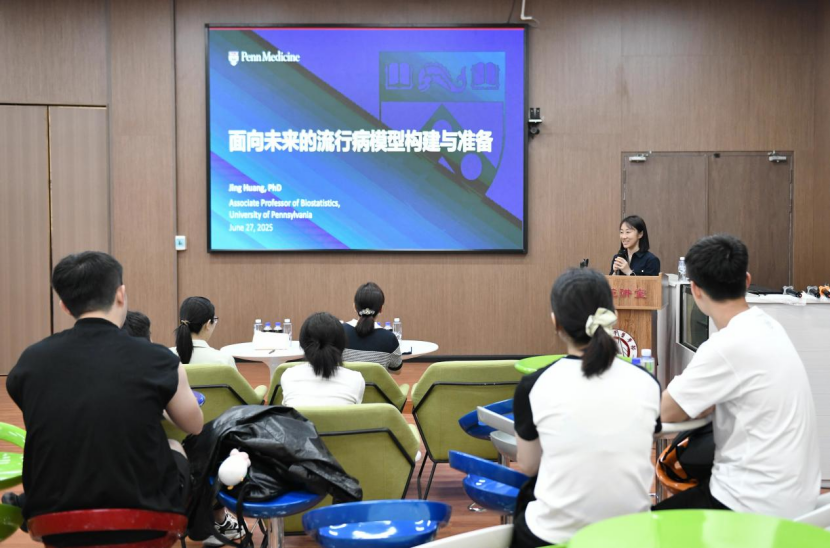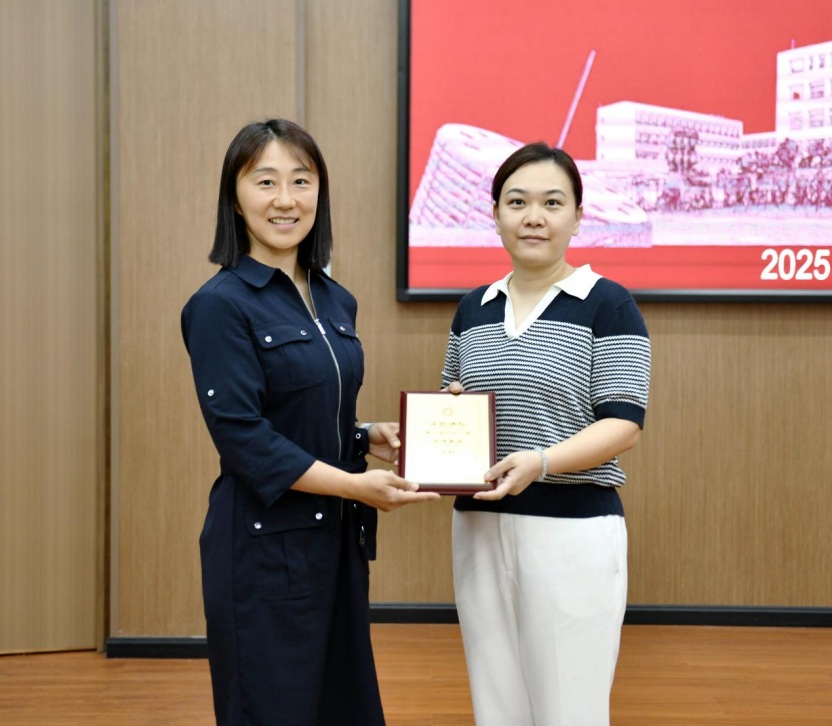Epidemic Model Construction and Preparation for the Future
On June 27, 2025, Dr. Huang Jing, Associate Professor in the Department of Biostatistics, Epidemiology, and Informatics at the Perelman School of Medicine, University of Pennsylvania, USA, served as the keynote speaker for the 138th Shenzhen Medical Forum. Her academic lecture, titled “Epidemic Model Construction and Future Preparedness”, was delivered at Shahe Yuan, Lihu Campus. The forum was hosted by Dr. Yu from the School of Biomedical Engineering and attracted a large audience of faculty and students from the Lihu Campus of Shenzhen University.

During the presentation, Associate Professor Huang Jing provided a comprehensive historical and contemporary overview of epidemics, clearly outlining the methodologies used to construct epidemic prediction models within the field of epidemiology. She traced the development of these models from the foundational Susceptible-Infectious-Recovered (SIR) framework to more advanced iterations with practical, real-world applications.
This research initiative began at the onset of theCOVID-19 pandemic, aiming to determine whether the virus exhibited seasonal patterns similar to those of influenza. Using regional modeling, the research team successfully predicted infection numbers in Philadelphia at an early stage, achieving a high level of overall accuracy. In March, when data were limited, the team turned to regression analysis, taking advantage of the significant temperature variations across the USA. The modeling process also incorporated key regional factors such as population age distribution, population density, healthcare infrastructure (measured by hospital capacity), and the stringency of public health policies. Professor Huang emphasized that real-time monitoring of disease transmission dynamics and time-varying reproduction numbers was essential throughout the modeling process.
Building on this foundation, Professor Huang introduced the Time-Since-Infection (TSI) model, which focuses on quantifying the temporal evolution of infection states within the infected population. This model enables the prediction of new infections at specific time intervals, facilitating the analysis of infection rate trajectories and recovery dynamics.
The scope of the research was subsequently expanded. Professor Huang’s team used the R statistical package to conduct an in-depth analysis of the relationship between the epidemic reproduction number and environmental variables, incorporating regional factors to improve the model’s generalizability. By applying a composite likelihood function to address statistical challenges and integrating data on both new infections and hospital admissions, the team developed a novel, refined model. This model was successfully applied to real-time data from four major US cities, enabling accurate modeling of daily new infections and hospitalizations.
Professor Huang also discussed additional aspects of her research, such as exploring the temporal dynamics of viral infectivity following infection. Findings in this field offer a scientific basis for optimizing isolation strategies. In closing, she emphasized the vital role of epidemic prediction during public health crises and highlighted the mutually reinforcing relationship between modeling frameworks and empirical data. She concluded by sharing forward-looking perspectives on future research directions in this field.
Professor Huang’s presentation was particularly engaging, showcasing a range of state-of-the-art research findings and achievements, and addressing key questions related to the application of artificial intelligence in epidemiology and bioinformatics. The presentation sparked a lively and productive discussion among attendees, with participants gaining valuable insights from the exchange of ideas.

Brief introduction of Dr. Huang Jing:
Huang Jing is a tenured Associate Professor in the Department of Biostatistics, Epidemiology, and Informatics at the Perelman School of Medicine, University of Pennsylvania. She also serves as Associate Director of Observational Research at PolicyLab, Children's Hospital of Philadelphia, and is a Senior Scholar at the Center for Clinical Epidemiology and Biostatistics. Her research focuses on electronic health record data modeling, infectious disease forecasting, personalized intervention strategies, and multi-source data integration, with a strong emphasis on advancing the application of statistical methods in public health and clinical practice.
As a leading contributor to the "COVID-Lab" prediction platform, her modeling work has been adopted by the White House, CDC, and multiple U.S. states, providing critical scientific support for pandemic response efforts. In recent years, she has led numerous research projects funded by the NIH, CDC, and PCORI, and has published over 90 papers in international journals including Nature Medicine, Biometrika, and JAMA Network Open. Her research has had a significant impact in the fields of statistical modeling, health informatics, pediatric chronic diseases, and infectious diseases.








用户登录
还没有账号?
立即注册